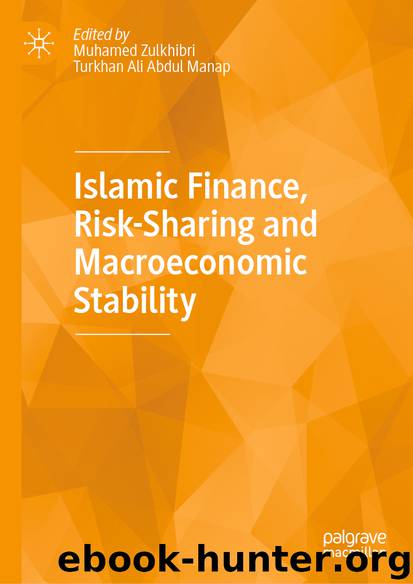Islamic Finance, Risk-Sharing and Macroeconomic Stability by Muhamed Zulkhibri & Turkhan Ali Abdul Manap

Author:Muhamed Zulkhibri & Turkhan Ali Abdul Manap
Language: eng
Format: epub
ISBN: 9783030052256
Publisher: Springer International Publishing
7.2.4 Empirical Studies on Financial Leverage
Banks’ financial leverage fundamentally differs from one of the non-financial firms since it includes deposits, a source of financing generally not available to non-financial firms. Moreover, much of the empirical research for firms was performed using long-term debt divided by assets rather than total liabilities divided by assets. Therefore, bank liabilities can be decomposing into deposits and non-deposits liabilities. Non-deposit liabilities can be viewed as being closely related to long-term debt for firms (Gropp and Heider 2010). The financial leverage of banks is, however, still a relatively under-explored area in the banking literature. Thus, there is no clear understanding of how banks choose their financial leverage and what factors influence their corporate financing behavior. Houston et al. (1997) find that lending at large banks is less subject to changes in cash flow and capital. Jayaratne and Morgan (1999) found that shifts in deposit supply affect lending at small banks that do not have access to the large internal capital market. Akhavein et al. (1997) also pointed out that large banks tend to decrease their capital and increase their lending after mergers. Bank size seems to allow banks to operate with less capital and at the same time engage in more lending (Amidu 2007).
A significant relation of bank size, profitability, tangibility, and liquidity is found with the leverage. Non-tax shield is found to have a positive but insignificant relationship with the leverage of the banking sector of Pakistan (Ali et al. 2011). Gul et al. (2012) also provided the evidence of the financial leverage theories pertaining to a developing country. Specifically, they examined the determinants of financial leverage for the firms in the banking and insurance sectors of Pakistan. Doing so, they find out the financial pattern of firms in these sectors and identify the financial leverage theory followed by the firms. They found that both the pecking order theory and the trade-off theory are pertinent theories to the companies’ financial leverage, whereas there was little evidence to support the agency cost theory. One should note that the above-cited studies have focused on only conventional banks.
Download
This site does not store any files on its server. We only index and link to content provided by other sites. Please contact the content providers to delete copyright contents if any and email us, we'll remove relevant links or contents immediately.
International Integration of the Brazilian Economy by Elias C. Grivoyannis(98932)
The Radium Girls by Kate Moore(11973)
Turbulence by E. J. Noyes(7978)
Nudge - Improving Decisions about Health, Wealth, and Happiness by Thaler Sunstein(7657)
The Black Swan by Nassim Nicholas Taleb(7056)
Rich Dad Poor Dad by Robert T. Kiyosaki(6513)
Pioneering Portfolio Management by David F. Swensen(6256)
Man-made Catastrophes and Risk Information Concealment by Dmitry Chernov & Didier Sornette(5956)
Zero to One by Peter Thiel(5732)
Secrecy World by Jake Bernstein(4700)
Millionaire: The Philanderer, Gambler, and Duelist Who Invented Modern Finance by Janet Gleeson(4421)
The Age of Surveillance Capitalism by Shoshana Zuboff(4245)
Skin in the Game by Nassim Nicholas Taleb(4202)
Bullshit Jobs by David Graeber(4140)
The Money Culture by Michael Lewis(4134)
Skin in the Game: Hidden Asymmetries in Daily Life by Nassim Nicholas Taleb(3961)
The Dhandho Investor by Mohnish Pabrai(3722)
The Wisdom of Finance by Mihir Desai(3694)
Blockchain Basics by Daniel Drescher(3540)
